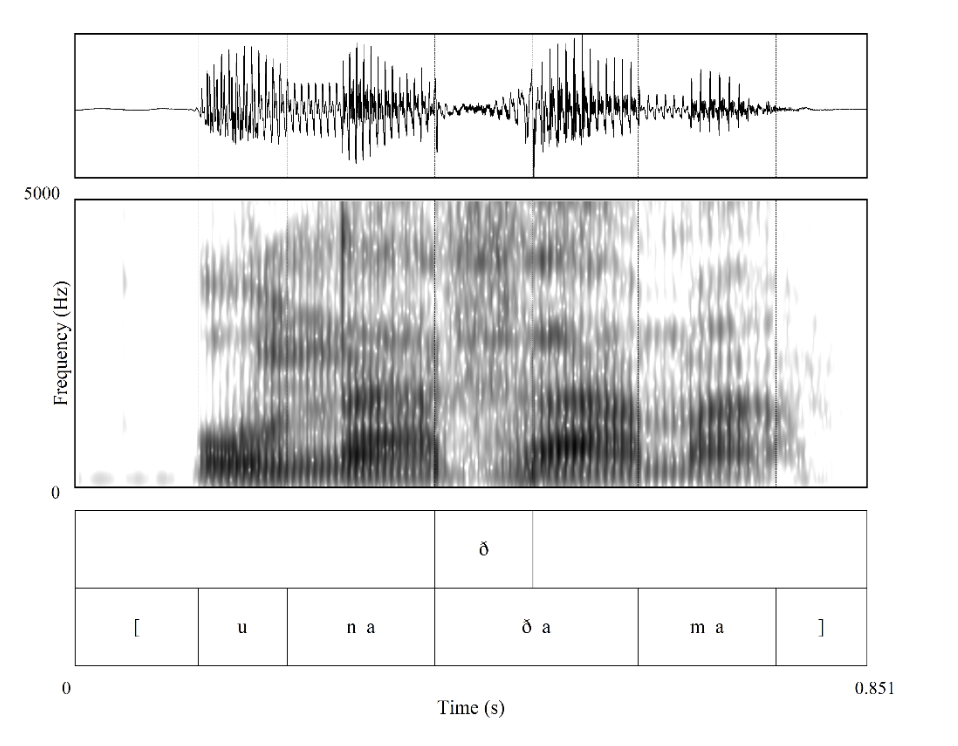Paper presentation at CIFE IX
Arróniz, S. & Willis, E. From one fricative to another: a perception experiment of coda /s/ and voiced phonemic stops as fricatives in Western Andalusian Spanish. International Conference on Experimental Phonetics. Universidade de Vigo, Spain. June 2023.
Abstract
This paper examines the interplay of two phonological processes in Spanish, the debuccalization of /s/ and spirantization of /bdg/ in a Western Andalusian variety of Spanish. The reduction of /s/ in coda position has been widely reported to occur in many different varieties of Spanish. Specifically, this lenition process has been described to result in an aspirated variant (Bybee, 2000; Hualde, 2005; Lipski, 1994), a glottal occlusion (Luna, 2010; Valentín- Márquez, 2006), or as a total elision (Poplack, 1980). A different well-known aspect of Spanish is the spirantization of /b d g/, by which these phonemes are produced as the continuant consonants in specific contexts. Traditional research of Spanish describes spirantization in terms of two distinct allophones in complementary distribution. The stop allophones [b d g] are found after pause, after a nasal, and, in the case of /d/, also after a lateral, while the approximant allophones [β̞ ð̞ ɣ̞] are found elsewhere (Navarro Tomás, 1918/1977; Martínez Celdrán 1984, 2022).
Preliminary production data of Andalusian Spanish of a coda /s/ followed by the voiced stops /bdg/ are produced as singleton fricative (e.g., /sb/ -> [v]) (Figure 1); the new allophone compensating for the lost /s/. A similar restructuring pattern is observed in the same dialect with /s/ and the voiceless stops with a resulting increase in aspiration or VOT of following stops /pas.ta/ -> [pah.tha] (see Torreira 2006, Ruch 2016). In this paper, we test the perceptual categorization of this compensation process by creating minimal pairs of the type /u.na.bo.ta/ -> [u.na.β̞o.ta] - versus /u.nas.bo.tas/ -> [u.na.’vo.ta]. We hypothesize that if the singleton fricative realizations ([v], [ð] or [ɣ]) are associated with plurality, we have evidence for a novel allophone resulting from /s/ reduction and spirantization as a new compensatory strategy.
Four speakers from Puerto Rico and two speakers from Seville, Spain, produced the stimuli. We created minimal pairs with an approximant and a fricative realization for /b d g/ based on plurality [u.na.’βa.ka] vs. [u.na.’va.ka] described previously, resulting in 24 tokens per speaker. The tasks were presented in a Qualtrics survey. The first task was a continuum judgment task in the form of a Likert scale along singular/plural continuum. The second task was a forced choice perceptual test using photos in which the participants had to listen to the stimuli and the singular or plural photo. The instrument was distributed to Andalusians and Puerto Ricans to serve as control.
Preliminary findings based on 34 Andalusians and 57 Puerto Ricans revealed that, indeed, Andalusians perceived a fricative realization of /b d g/ as plural, implying the perception of an /s/, while Puerto Ricans did not (Figure 2). These fricative allophones were perceived as a phonological manifestation of /s/ plus /b d g/ by Andalusian listeners, showing evidence for a new compensatory strategy in this speech community. This resolution strategy of /s/ now yields three discrete allophonic realizations derived from phonemic /b d g/, an occlusive, an approximant, and a fricative when preceded by an elided /s/.

